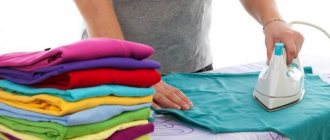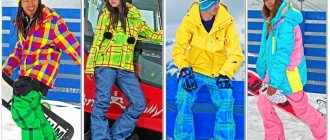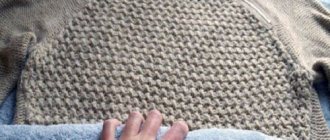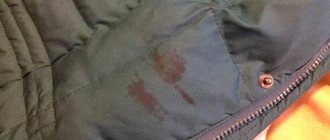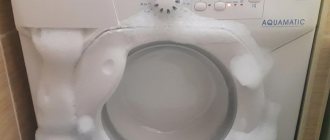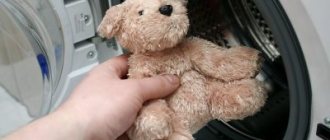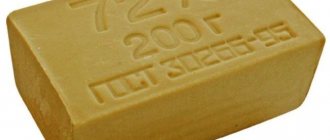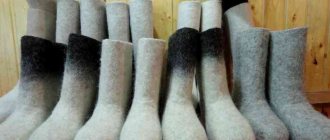Updated: 06/30/2021 12:58:24
Bio-down is a biopolymer, down jackets from which provide excellent warmth and at the same time are light, thin, and easy to care for. It is often used to produce other products. This material can be washed both by hand and in a machine. At the same time, there are a number of rules, following which you will preserve the original appearance of the product for a long time.
What is bio-down
Bio-down was invented “by mistake” in the 1970s and was later used to produce clothing for American astronauts. After identifying the unique properties of this material, it began to be actively used for other purposes.
Bio-down is a new generation of insulation. It was used to sew clothes and sleeping bags for people who lived in the Northern regions and for polar explorers. However, today it is often found in ordinary down jackets, in fishing and hunting clothing, in fillers for blankets, pillows and children's toys.
This environmentally friendly material is hypoallergenic, resistant to deformation, moisture and wear. With proper care, it does not roll or crumple. Bio-down retains volume for a long time and is resistant to dust mites and mold. Its drying is carried out under natural conditions and takes a minimum of time.
There are also disadvantages: this material does not tolerate high temperatures well, and also accumulates static electricity. It is flammable, has reduced hygroscopicity and is more expensive than regular fluff.
Handwash
Washing a down jacket by hand is more labor-intensive than washing it in a machine. But they resort to it because they consider it more careful.
On the eve of washing, you need to check all pockets for foreign objects and unfasten all fur parts.
It is most convenient to wash the item in a large basin or directly in the bathtub. Washing water should be warm, but not hot . The maximum permissible temperature is 45 degrees.
Before washing, straighten the down jacket and “beat” it well so that the down:
- evenly distributed
- became more voluminous
- absorbed water evenly.
The detergent is dissolved evenly in the water, then the item is lowered and gently wetted.
You can use any powder for washing, but liquid detergent is considered more gentle , and dry powder is better at removing heavy stains.
You can replace the powder with soap, preferably baby soap. The soap is dissolved evenly in the solution, rather than lathering the entire jacket.
Exceptions are places with heavy pollution. For better washing results, the item can be pre-soaked, but not for more than a few hours. Prolonged soaking greatly compresses the fluff and spoils the item.
It is not forbidden to use conditioner , but with careful hand washing it is not necessary. Moreover, it is more difficult to rinse it manually.
During the washing process, you need to gently beat the entire down jacket with small amplitude movements. After processing the entire product, you need to wait until the water drains by itself and collect water for rinsing. Carry out rinsing with the same movements, repeat if necessary.
A big mistake when washing would be sudden and monotonous movements, for example, lifting the entire down jacket and suddenly lowering it into the water - this contributes to the filling falling off.
Also, you should not squeeze, especially twist, the product . This will disrupt both the structure of the fabric and the structure of the filler. You need to wait for the water to drain on its own.
General recommendations
The optimal temperature for washing the product is 30-40 °C. If you set the temperature lower, you won’t be able to get rid of dirt, and if you set it higher, the filler will roll off.
A suitable product is gel powder, since standard dry powder leads to white spots and unsightly streaks. Special detergents for washing down and wool products are suitable, since they do not contain sodium perborate, which provides a more acidic environment, since an alkaline environment risks destroying bio-down fibers.
Bleach and conditioner should not be used.
Be sure to read the information on the product label. The manufacturer indicates the maximum water temperature for washing, the ability to machine wash the product and use an iron. So, if the label shows an image of a basin with a palm, then such a product can only be washed by hand, but if the basin is crossed out, then you will have to be content with dry cleaning or dry cleaning.
Reviews
Julia “I spent a long time looking for stories from those who washed coats with artificial synthetic padding; I was afraid myself. But the child completely stained his jacket, so I had to resort to machine technology. I can say that the excitement was in vain - I followed the instructions, everything worked out! The item is clean, the filler has expanded, the structure has not changed.”
“If you, like me, bought a warm jacket with such filling, remember my advice! I threw it into the machine - in the end the filler crumpled up so much that I couldn’t straighten it out. The mistake is that I chose the mode for standard washing of outerwear. I advise everyone to stick to the most gentle setting with a temperature of 40 degrees and carefully read reviews of bio-down after machine washing.”
“I don’t know why everyone is so afraid to wash these clothes - after all, everything is written on the label. I wash according to the instructions, select the delicate mode, temperature 30-40, do not forget to turn off the spin. As a result, a clean product needs to be hung on a hanger in a ventilated room without shaking - everything will be fine, there will be no lumps.”
Eva “I’ll give you a little advice - before starting cleansing, you can rub the dirty places with a soft brush, using water and soap. I prefer the manual version, I don’t soak it. I use liquid gel - the whole process takes about 10 minutes. The main thing is not to put pressure on the item when spinning! So I already ruined the first overalls, strong twisting is harmful.”
We told you about how to wash things correctly so as not to spoil the quality of the item and preserve the insulation. You can study the features of the material, its properties, advantages and disadvantages in another detailed review on our website. There are no more questions and secrets left - we figured out what bio-fluff is and how to wash it by hand or using technology. Now the products will delight you for more than one or two seasons. Next, you can find out everything about washing a feather pillow.
How to wash bio-down in a machine
You should not add any other things to a product with bio-down. If there is free space left, this is good: clothes will be washed better, detergent residues will be completely eliminated.
Procedure:
- Select Delicate, Hand Wash, Wool or Silk.
- Turn off the spin, and the appropriate number of revolutions is 600 (otherwise the filler risks getting lost).
- Set rinse. If, in addition to the powder, you add another detergent, then you need to rinse the item at least 2 times.
- Turn the product inside out and fasten all zippers.
- Place the clothes in the drum and add 2-3 tennis balls inside. You can also use plastic balls.
Plastic balls are designed specifically for washing items with fillers - you can find them in hardware stores. Such balls prevent fluff from clumping into lumps, and also enhance the effect of the gel or other detergent. During the rinsing process, they completely eliminate detergent residues, which prevents the formation of unsightly stains.
Attention! You should not wash a product made from bio-down in a machine too often, otherwise this will lead to accelerated wear.
Bio-fluff in outerwear
If synthetic down can be compared with natural down in terms of thermal insulation characteristics, then in appearance they are completely different. Bio-fluff is more reminiscent of holofiber, since it has a three-dimensional spherical structure. This means that products made from it look more voluminous than those made from natural down.
Winter down jackets made from biodown are most often preferred by men, while women try to choose more sophisticated and less voluminous models. In general, the range of products made from this insulation is quite wide. Bio-down is used to sew jackets and overalls for children and down jackets for adults. Products are recommended to be worn at temperatures from 0 to -30 °C. When choosing clothes, it is important to ensure that the outer material is waterproof. Then a jacket with synthetic down will not be afraid of snow, rain or frost.
How to wash bio-down by hand
Washing products with bio-down by hand is more labor-intensive, since the wet down jacket becomes heavier, which makes washing and rinsing more difficult. But still, hand washing is the most gentle and careful way to clean the product from dirt.
- First of all, you need to shake the down jacket to rid it of dust, and then check the pockets, fasten the zippers, unhook the fur trim, and turn the jacket inside out.
- The next step is to remove stubborn stains using a soft sponge and soap. Pre-soaking the product is unacceptable. Fill the bathtub with warm water and add a suitable detergent.
- Wash the down jacket, clean the stained areas with a sponge and rinse it several times in clean water. It is necessary to ensure that the water becomes completely transparent after rinsing.
Is it possible to use conditioner when washing a down jacket?
When washing a down jacket, it is not recommended to use regular fabric softeners and fabric softeners, otherwise the down may stick together.
Interesting materials:
How to freeze cauliflower? How to remove an apostrophe in Word? How to disable automatic browser opening when logging in? How to remove white stains from polished furniture? How to remove white plaque from tiles? How to remove white plaque from ceramic tiles? How to remove bitumen from tiles? How to remove pop-up blocker? How to remove double-sided tape from a plastic window? How to remove double-sided tape from glass?
Drying Features
- Squeeze the product carefully so as not to deform it. Do not twist the jacket too much, otherwise the down will become crumpled. It is enough to place the down jacket on the bottom of the bath for 20-30 minutes so that the water drains naturally.
- Next, you need to place the item on a floor dryer, placing rags underneath. This is necessary in order to get rid of the bulk of the moisture. Then the down jacket must be hung on hangers - under no circumstances bent in half, otherwise even an iron will not be able to deal with the resulting creases.
- Next, it is enough to place the product in a dry, cool room, away from heating devices. If the down jacket is dried outside, it should not be in direct sunlight.
- If bio-down pillows have been washed, they should be dried in a horizontal position - on a metal dryer or on the surface of several ropes on the balcony. Turn them over to the other side every 1-2 hours to ensure even drying.
- On average, bio-down dries completely in 3-4 hours. In order to speed up the drying process, you can place the product in the dryer by selecting the “For down products” mode. If this mode is not available, just set the minimum temperature.
- After the down jacket is completely dry, you need to gently fluff it. This will allow the filling to spread out and give the jacket the appropriate shape. Next, the product can be ironed by placing gauze on top. Instead of an iron, you can use a steamer - this will preserve the integrity of the top layer of fabric and the filler itself.
Products made from bio-down should be stored in a closet, flattened, and in the off-season, a cover should be put on it to protect it from dust. Vacuum bags cannot be used - otherwise creases will appear on the down jacket.
Selecting a detergent
To preserve the properties of synthetic material, you need to choose the right detergent for washing:
- Liquid or gel form is best suited for this. It washes out easily and leaves no streaks.
- To give the product lightness and airiness during rinsing, you can use conditioner.
Washing powders are not suitable for this purpose, especially those with granules. They will linger in the fibers and will take a very long time to rinse out.
After washing with powder, white streaks will remain on the jacket. If there are granules left in the filler, then streaks will appear on the down jacket even after rain.
If there is an urgent need to wash a down jacket, but there is no liquid product on hand, you can dissolve a small amount of powder in hot water. When washing by hand, you can use shampoo instead. But it is not suitable for serious pollution.
Preparing for cleaning
Before you wash your down jacket in the washing machine, you need to properly prepare it. To do this, do the following.
Check the pockets, there should be no things inside: checks, candy wrappers, coins and bills, it is advisable to clean out all the garbage such as pellets and small crumbs. Inspect the item for local contamination, especially if it is light-colored. The most worn out are the pockets, the lower part, the collar area and, of course, the cuffs. If the stains are minor, they can be washed off with laundry soap. To remove difficult stains, you will need a stain remover. Cosmetics, such as foundation or powder, can be removed with micellar water or toothpaste, and white fabric can be bleached with a mixture of hydrogen peroxide and ammonia in equal quantities.
But be careful with the amount of bleach, it also does not have the best effect on the natural filler. All pockets with zippers and buttons must be fastened, otherwise you risk losing small accessories. Turn the item inside out - this is important. The basic rule is very simple: one washing session - one item. Even if you have two dirty jackets of the same color, it is not recommended to wash them together
At a minimum, both will be poorly cleaned; at maximum, they will be spoiled.
How to dry clothes correctly
One of the advantages of clothing is quick drying. In this case, you should follow simple rules that help dry things without losing thermal characteristics and attractive appearance:
- Down jackets filled with eco-down should be dried unfolded, laid out on a horizontal surface. This method avoids the bio-fluff from falling off and helps preserve the appearance of the product. Lightweight jacket models can be hung on wide hangers.
- It is important to ensure good ventilation during drying. In winter, when drying things outdoors is problematic, clothes should be placed in a warm, well-ventilated room. If several jackets have been washed and there is little space for drying, then hangers with down jackets should be positioned so that there is enough space between them.
